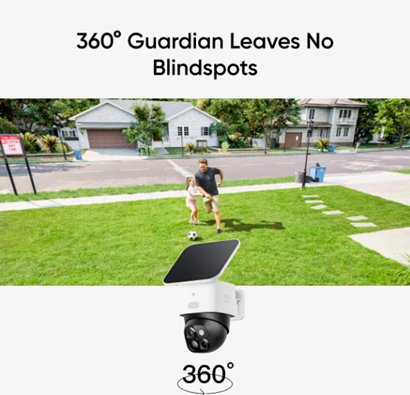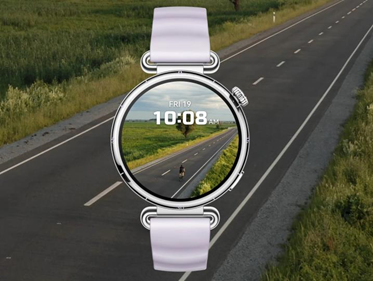Security cameras play a crucial role in safeguarding both personal and business environments. When considering installation, a common question arises: Is 4K resolution truly necessary for effective surveillance? As video quality improves, understanding whether 4K is required becomes pivotal. While some may argue that higher resolutions offer enhanced clarity, others point out the increased cost and storage requirements. In this blog, we will explore what 4K means for security cameras, assess its benefits, and help you decide if it’s the best choice for your needs.

What does “4K” mean in security cameras?
Resolution, pixels, and detail
4K refers to a resolution of approximately 3840 x 2160 pixels. This high pixel count translates to greater detail and clarity, far surpassing traditional resolutions. When viewing footage, 4K allows observers to discern fine details, which is crucial for identifying faces, license plates, and other critical elements in a scene. With enhanced sharpness, users gain stronger evidence in investigations and improved confidence in their surveillance system’s reliability across various conditions, whether day or night.
How 4K differs from 1080p and 2K
Comparatively, 1080p, or Full HD, offers 1920 x 1080 pixels, while 2K provides around 2048 x 1080 pixels. Both are less detailed than 4K, with 4K offering four times as many pixels as 1080p. This substantial difference means 4K captures more information, providing a clearer and more detailed image. The added sharpness makes 4K invaluable for monitoring large areas where small but important visual cues, such as suspicious movements, must remain visible at all times.
Benefits of using 4K in surveillance
Better identification of faces, license plates, fine details
With sharper imagery, 4K cameras are adept at picking out finer details that might be lost in lower resolutions. This capability is especially beneficial for identifying faces or reading license plates from a distance. For businesses and homeowners alike, this clarity reduces false positives and enhances the credibility of recordings, ensuring that crucial evidence holds up when needed for legal or investigative purposes.
Wider area coverage with clarity
A single 4K camera can cover a larger area without sacrificing image quality, potentially reducing the number of cameras needed. This wide-area coverage helps in monitoring extensive spaces with fewer devices. By optimizing placement and maximizing field of view, users can achieve cost savings and simplify maintenance without compromising their overall security network’s strength and reliability over time.
Future-proofing your system
Investing in 4K technology ensures your security system remains relevant as video standards evolve. Given the pace at which technology advances, starting with a higher resolution can prevent the need for costly upgrades in the near future. This forward-thinking approach allows property owners to remain competitive, leverage future AI integrations, and extend the longevity of their equipment without frequent replacement or disruptions.
How to decide: 4K or not?
Assess your security goals
Start by evaluating what you hope to achieve with your surveillance system. If capturing detailed, clear footage is a priority, 4K might be the way to go. Businesses protecting valuable assets or households in high-traffic areas particularly benefit, as the technology ensures greater visibility, stronger deterrence, and a higher level of confidence in captured recordings for future use.
Match with your infrastructure
Check if your current infrastructure supports 4K. Ensure your network can handle the bandwidth and that you have sufficient storage for large 4K files. Beyond that, evaluate whether your display devices, such as monitors or mobile apps, can showcase the full detail of 4K, maximizing the investment in this resolution. Proper planning avoids unnecessary bottlenecks and wasted resources.
Hybrid strategy: mix 4K & 1080p
Consider a hybrid approach by using 4K cameras in critical areas and 1080p in less crucial spots. This strategy balances cost and quality effectively. By selectively deploying 4K, you ensure important areas like entrances, cash registers, or driveways receive top-level detail, while secondary spaces remain sufficiently monitored without overwhelming your system’s bandwidth or storage.

Real-world examples & references
Examples from systems using 4K
Many retail stores and public spaces have successfully implemented 4K systems. These setups provide high-quality footage, aiding in crime prevention and investigation. Their success demonstrates how adopting advanced resolution helps reduce theft, settle disputes quickly, and create safer environments for both staff and visitors, reinforcing the value of upgrading from legacy systems.
Comparative case: 1080p vs 4K in field
In surveillance comparisons, 4K systems allow for zooming into footage without losing clarity, unlike 1080p, which can become pixelated. This advantage is evident in reviewing detailed material after incidents occur. Security professionals note that the difference can determine whether critical identifiers, such as a license plate, are readable or blurred, making 4K essential in evidence gathering.
Conclusion
Determining whether 4K is necessary for your security camera system hinges on individual needs and circumstances. Its benefits, such as improved detail, wider coverage, and future-proofing, are significant. However, evaluating your specific requirements and infrastructure capabilities will guide you in making the best choice. Opting for a hybrid system may balance performance and cost effectively. Ultimately, 4K strengthens long-term protection, making it a smart choice for many users seeking reliable security and peace of mind.








